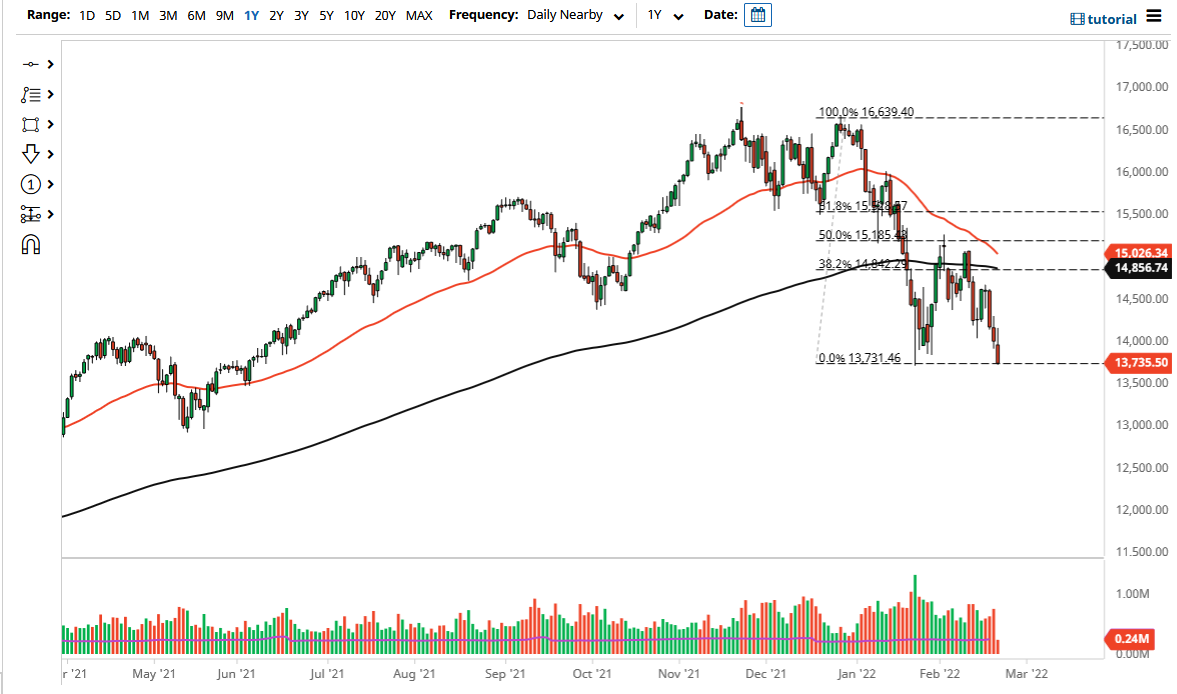The NASDAQ 100 gapped lower in electronic futures trading on Monday, turned around to show signs of recovery, and then fell apart after that. At the close of business, the NASDAQ 100 was testing the lows that we had seen back on January 24, closing at the very bottom of the candlestick. In other words, this thing looks like it is about to fall apart. This is not a huge surprise, because everything is lining up for negativity at this point.
The first thing is that we have the Federal Reserve looking to tighten monetary policy, something that is absolutely toxic for growth stocks. Because of this, it makes quite a bit of sense that we would see the market struggle, and now it looks like Vladimir Putin willing to recognize the two breakaway republics in the Ukraine is an escalation of tensions that could lead to a shooting war much quicker. With that in mind, we could see a major run towards safety, which the NASDAQ 100 most certainly is not. In that scenario, we could see a bit of a meltdown towards the 13,000 level rather quickly.
If we do get some type of good news, we need to break above the 14,140 level before you can see any type of serious attempt to recover. A break above there then has the market challenging the 14,500 level, where we had seen some pressure previously. Because of this, I do think that it is probably only a matter of time before we see sellers jump back into this market because we just do not have enough good news at any one time to turn things around. I think we are about to see a pretty ugly move to the downside, not only in the NASDAQ 100, but also in multiple other indices in the United States and other places around the world. The United States will probably outperform most other indices, but that is a relative scenario where you “lose less” than other markets. Because of this, I am fading rallies and will more likely start shorting at the open as I think the momentum is about to pick up quite nastily. I have no interest in buying the NASDAQ 100 anytime soon, at least not without some major change in both geopolitics and the Federal Reserve.

